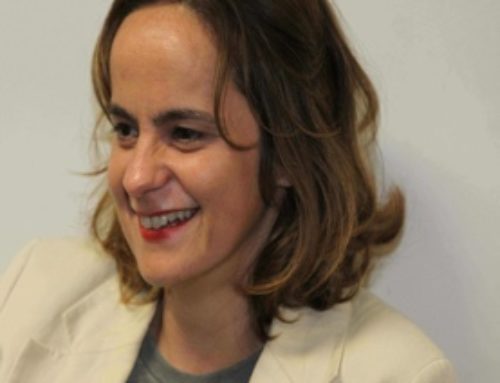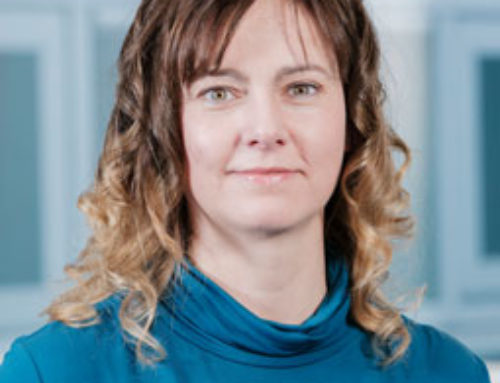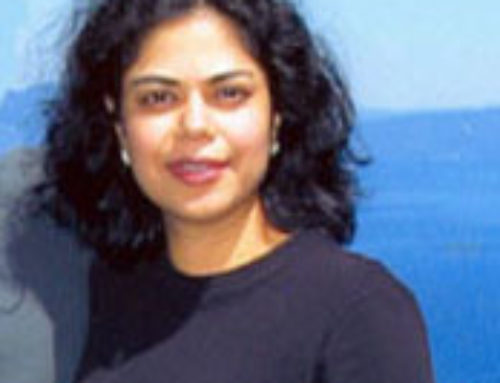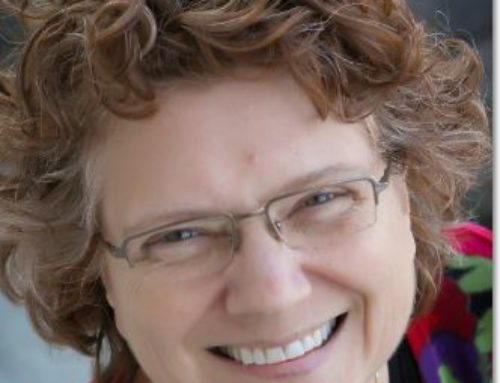HETL note: We are pleased to present our first opinion article for 2104 – Lisa Fedoruk’s “Cultural Similarities and Differences: A Personal Reflection on Teaching in Kazakhstan”. Lisa tells the reader her and her team’s experiences with conducting teacher development workshops in Kazakhstan in a lively and engaging way, and reflects on how common beliefs and attitudes can be built and shared across cultural contexts. You may submit your own article on the topic or you send “letter to the editor” of less than 500 words (see the Submissions page on this portal for submission requirements).
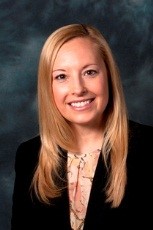 Author bio: Lisa Fedoruk has been a K-12 and post-secondary educator for the past 10 years, in addition to 6 years in private industry. Previously teaching at SAIT Polytechnic in the School of Health and Public Safety, Lisa is currently seconded as the e-Learning Faculty Facilitator in Faculty Development Services, Centre for Instructional Technology and Development. During her time at SAIT she has engaged in numerous roles that include facilitation, face to face and online instruction, curriculum development and design, and online and face to face program design. With a passion for education, she has successfully pursued a Bachelor’s Degree in Education from the University of Alberta, and a Master’s Degree in Education from the University of Calgary. Lisa immensely enjoys travel and has had international teaching experiences in both Japan and Kazakhstan. As a lifelong learner she looks forward to beginning her upcoming doctoral journey. Contact email: [email protected]
Author bio: Lisa Fedoruk has been a K-12 and post-secondary educator for the past 10 years, in addition to 6 years in private industry. Previously teaching at SAIT Polytechnic in the School of Health and Public Safety, Lisa is currently seconded as the e-Learning Faculty Facilitator in Faculty Development Services, Centre for Instructional Technology and Development. During her time at SAIT she has engaged in numerous roles that include facilitation, face to face and online instruction, curriculum development and design, and online and face to face program design. With a passion for education, she has successfully pursued a Bachelor’s Degree in Education from the University of Alberta, and a Master’s Degree in Education from the University of Calgary. Lisa immensely enjoys travel and has had international teaching experiences in both Japan and Kazakhstan. As a lifelong learner she looks forward to beginning her upcoming doctoral journey. Contact email: [email protected]
~~~~~~~~~~~~~~~~~~~~~~~~~~~~~
Cultural Similarities and Differences: A Personal Reflection on Teaching in Kazakhstan
Lisa Fedoruk
SAIT Polytechnic, Canada
Abstract
In this article I present personal reflections stemming from my experience being part of a cohort of five facilitators who embarked on a journey to Kazakhstan in 2012. The purpose of our trip was to expose 39 Russian and Kazakh instructors to a Western style teaching model through delivery of the Instructional Skills Workshop (ISW.) The post-secondary institute I work for and a government organization in Kazakhstan have been partnering to establish a network of consistent teaching practices in an attempt to blend cultures and teaching styles. These new teaching practices were to be emulated in a new post-secondary institute in Kazakhstan which opened to students January, 2013. My experiences identify and explore unexpected lessons learned through narrative reflections and specific quotes from anonymous feedback provided by participants post workshop.
Keywords: Kazakhstan, Instructional Skills Workshop, Instructor-centered model, Student-centered model, Facilitation, Reflection
Introduction
In early 2012 a government organization in Kazakhstan was tasked with the responsibility to seek global guidance in the development of new educational institutes as a way to meet the needs of its country’s labor market. With SAIT Polytechnic’s international reputation and experience in the global market, a relationship was formed with a goal of supporting Kazakhstan’s need for skilled workers in the energy industry – the country’s leading economic sector.
As a result of this partnership, my post-secondary institute agreed to send a group of us to Kazakhstan to deliver faculty development and training workshops. An objective agreed upon was the fact that theoretical instruction was needed as well as hands on training in these new Kazakh educational institutes. Historically Kazakhstan’s model of instruction has been instructor-centered and theory driven using methods such as direct lecturing and student learning through listening and observing. The institute I work for adheres to a student-centered approach to instruction keying in on the cognitive, psychomotor, and affective domains of the learner.
Within this approach to education, the needs of the learner are the priority and focus on student abilities, interests and learning styles (McCombs & Miller, 2009). With the goal of presenting my post-secondary institute’s approach to teaching, our endeavor of introducing a student-centered model entailed changing a traditional instructor-centered standard to teaching and ways of thinking. This was a challenging task considering deep-rooted beliefs in how one was taught greatly influence how they teach others. Pajares (1992) claimed that teachers’ beliefs are more influential than their knowledge in determining teaching behaviours. “Few would argue that the beliefs teachers hold influence their perceptions and judgments, which, in turn, affect their behaviour in the classroom…” (p. 307). The risk in having us introduce a new teaching model was the rejection by the Kazakh and Russian instructors of our student-centered teaching ideas and beliefs and defaulting to their traditional teaching methods.
The teaching model chosen to deliver to 39 Russian and Kazakh instructors was the Instructor Skills Workshop (ISW), a model commonly used at my post-secondary institute that “encourages reflection and examination of one’s teaching practices with feedback focused on the learning process rather than on the specific content of the lesson.” (n.d; iswnetwork.ca). The ISW has an established reputation as an international model implementing a grassroots, basic structure that allows for flexibility in hands-on practice, constructive feedback, and self-reflection. ISW “engenders participatory learning and the building of community that can transfer back into the classroom and the institution”; while new faculty members are given the opportunity to learn about the organizations’ s culture and value system, the workshop “can also be a renewing and revitalizing activity for more seasoned members”, with additional benefits such as developing a sense of collegiality, and learning new approaches to working with others through team-building and self-discovery (http://iswnetwork.ca/about/isw-program-in-detail/)
Five of us journeyed to Kazakhstan as facilitators and delivered two, five-day Instructional Skills Workshops to one group of 17 Kazakh and Russian instructors and a second group of 22 Kazakh and Russian instructors. Over the course of two weeks we worked closely with five Russian and Kazakh translators to deliver critical material in plenary sessions as well as facilitate individual feedback sessions with the foreign instructors. The following narrative includes stories and examples of cultural differences, lessons learned, and reflections of our assumptions to clarify meaning and understanding.
Checking Assumptions
The opportunity to travel to Kazakhstan arose with approximately three weeks’ notice. As a team of five facilitators, we cleared our schedules and spent a great deal of time preparing lessons, packing supplies, and investigating the region we were about to embark upon. Historically Kazakhstan was ruled by the communist Soviet government until 1991 when President Gorbachev declared his policy of perestroika (Haber, 2003, p. 120). With our lack of experience and knowledge of this intriguing country cloaked in mystery, all we had were our own presuppositions and Western assumptions to guide us. With this in mind, the biggest concern was how our cultures would embrace or clash. What were the cultural implications to introducing and modelling a different way of thinking and teaching? The prevalent risk was the outcome of our ideas being rejected and the obvious limitation was time to implement a teaching model that contained elements completely opposite to Kazakh and Russian historical and cultural beliefs.
On the day of departure, although we were excited and as prepared as we thought we could be, there was still much unknown and behind our smiles was a pervasive nervousness. We decided the only way to be truly successful was to open our hearts to the unexpected and trust each other to deal with whatever presented itself. This was not an easy task considering we were a new team who had just met three weeks prior.
Due to miscommunication with shipping arrangements, we did not want to be stranded without the necessities to run the ISW sessions. Reluctant to assume that the resources we required were available in Kazakhstan, each facilitator packed an extra suitcase filled with translated ISW manuals, notebooks, paper, pens, chalk (just in case,) markers, and many more items needed to set our participants up for success. We had prepared with our own needs in mind and what we thought were the needs of others. What we were not prepared for was the customs process at the Kazakhstan airport. The detail of notifying Kazakh officials that we would be working in the country was forgotten in the chaotic process of preparing. With customs officials unaware of our business in Kazakhstan and a language barrier, we waited for our driver to translate our reasons for arrival. After what seemed like hours, we were on our way to the hotel.
The first few days in Kazakhstan were meant for us to meet and get acquainted with our program coordinators who represented the government organization in partnership with my post-secondary institute. They taught us that although they had immense knowledge about the project of building the first of many polytechnic institutes throughout the country, they were not above seeking outside points-of-view and making considerable attempts to implement changes. While on tour of the new institute, we discovered that it was not about displaying to us what a prestigious institute they were building, but rather an attempt to seek our opinions and advice. We initially made the assumption that the tour would involve “showing off” what was constructed; however, that presupposition was indeed incorrect. This began to build camaraderie; it also set the tone for the way we as facilitators would be respected and as a result the way we would pass that treatment on to our participants.
As I reflected upon this experience, it held an interesting realization and bridge to the ISW. The variable of camaraderie is a key component in the ISW model. To achieve this, there must be a high level of trust, collaboration and safety among many other important elements needed to succeed. An example of how this begins, according to the ISW model, is that on the first day of the workshop facilitators guide participants through development of a mutual classroom agreement of personal and best practices. This is followed by an ice-breaker activity to open lines of communication and opportunities to begin the process of getting to know each other.
Throughout the workshop, activities become more personal when participants must reflect on their values and philosophy of teaching and share with the group. Although this can be difficult, it is supported by Lovat, Clement, Dally, Toomey (2005) in understanding that one’s own values combined with a personal teaching philosophy equate to a higher quality of teaching. As one of our program coordinators depicted, historically the national personality of Kazakhstan has been conservatively private and quite rigid at times. The idea of being open and authentic had not been communicated often. I wondered how we would be perceived by our participants and if they would be as open minded and accepting as our coordinators.
Our first impression of this new institute was one of awe, openness, and professionalism. Contractually however, what literally tripped us up was that the stairs in the building were all of varying heights. The minute details of finishing required in North America did not hold the same importance and standards that we are used to.
Additionally, the institute was still in its final construction phase; therefore we actually delivered the ISW sessions in a different, older college. We learned that a “college” in Kazakhstan did not hold the same characteristics as a college in North America. The ages of the students varied and the institute was somewhat similar to a high school / pre-college combined.
We also discovered that there existed a social status in regard to the floor individuals are placed on. The closer the floor was to the ground meant the higher the status. Each level of the building had its own individual group of ladies that provided administration and care for the floor. In the time we spent at this institute, we grew to care for our administration floor ladies so much that they became part of our emotion-filled good-bye party. They were overcome with gratitude and expressed much appreciation when we decided to leave them with our stationary and leftover supplies. The pink fluorescent flower-shaped Post-Its were particularly coveted. We learned that simple supplies we took for granted and assumed could be purchased or obtained without issue in North America were not as easily accessible for these foreign educators.
A Difference in Values: Unexpected Lessons Learned
One of the biggest cultural differences was the value of time. An early experience that we encountered was that “time” in Kazakhstan was merely an approximation. Prior to departure while engaging in our ISW planning meetings, our daily agenda dictated a strict start time of 8:30 am resulting in finishing the day off at 4:00 pm. After completing a classroom agreement on the first day of the workshop with our participants, this was negotiated to 9:00 am; however most days we started later and finished approximately at 6:00 pm. Our participants seemed to find the way we highly valued time to be fairly opposite to their relaxed approach and were surprised to find we would have already started a plenary session while many participants were just walking into class (Foreign Affairs and International Trade Canada, n.d.).
One afternoon during our workshop the Deputy Minister of the region visited our classroom. This created quite a stir, especially with the media; later that evening we were featured on prime-time national news and in the local newspaper the next day. The minister shared that everyone in the room was part of the future of teaching in Kazakhstan. At this point we fully realized the value given to this project. We learned that our Kazakh and Russian participants had taken trains, some for 45 hours, to be part of what they deemed to be an intensive study.
As I reflected upon our North American culture, I thought about how difficult it could be to have participants commit to a few days of any type of professional development due to such busy schedules and tight academic timelines. This was an unexpected lesson learned in our differences of what we value as professional growth and development. In North America many post-secondary instructors have the means to choose from multiple sources of professional development to engage in at most times of the year. This reminded us of the value of professional growth and the luxury of support and choice in the ability to engage in life-long learning.
As the first few days of the workshop progressed, we realized our unsung heroes were the five translators who worked passionately throughout the ISW sessions. From these individuals we learned about language and culture. Often, because our words could be interpreted in different ways, the translators indicated the necessity to see our nonverbal actions, see our mouths, and hear our words and intonations. This enabled them to interpret not only what we were trying to deliver, but also translate our intent, which was very important in the Kazakh language (Brown & Ogilvie, 2009). Once we learned this, we tried to be sure our translators could see us well at all times.
Since our participants came from various regions throughout Kazakhstan, there were three very distinct languages being spoken in the room, English, Russian, and Kazakh. This contributed to miscommunication and misunderstanding, yet there was beauty in the effort, openness, and creativity that was established in our little corner classroom on the third floor. We learned that “pace” would become very important and as such, it forced us to carefully and thoughtfully choose our words, energy, and nonverbal communication strategies.
This experience taught us that a great deal of reflection was necessary and enabled us to grow as facilitators by taking the time to think before speaking. The messages often transcended language. Often in Kazakh (being a nomadic language banned for almost a century) there simply were no translatable words (Brown & Ogilvie, 2009). We had to find new ways to get our messages across. The participants remarked that we did not give up on them, but found creative ways to deliver material through facial expressions, gestures, role play, continuous eye contact, didactic methodologies, providing diverse examples, and simply by the enthusiasm we exuded.
The participants also learned not to give up, but found ways to get their thoughts across by using similar techniques, despite frustration and challenges. In the words of one anonymous participant (offered through a translated post evaluative feedback form) “The language comfort is not disturbed, all participants are participating in the learning process, there were no division for weak and strong, everyone finally got information through different ways.”
ISW Workshops
During the two ISW sessions, we found the participants to be very relaxed and social during breaks. However, when the participants were engaged in teaching role-plays, we realized they had been taught to use a strict methodology, one that is instructor-centered, having students listen passively (McCombs & Miller, 2009). I also noted that there existed an unspoken hierarchy that was represented physically in Kazakh classrooms with the teacher’s desk sitting on an elevated platform at the front of the room. As the first ISW session progressed, our demonstration and modelling of our beliefs and behaviors of a student-centered practice, equality among peers, males and females, and teacher/facilitator/ student was a new concept that shifted perspective lenses.
An example of this evolution took place at the beginning of the first five day workshop when a participant who, in Kazakh culture held the highest hierarchical position specifically because of his senior age and male gender, consistently spoke on behalf of the group without question. As the workshop continued, and through our encouragement of openness, honesty and reflection, a younger female participant verbalized her frustration in the lack of ability to express herself openly and suggested in a very professional manner that she would prefer to speak as an individual. This was a full circle moment when the response from the senior male participant was one that expressed relief that he could relax and just listen.
As facilitators, we knew that speaking up against cultural norms could have created tension; however, we took a step backwards and allowed these two participants to openly discuss their thoughts in a safe and sacred space without judgment. It was one of the most revealing and expressive cultural and value-laden discussions I have had the honor to witness.
Most of the time the concept of equality in the classroom is a value taken for granted in North America with many educational institution’s student-centered model of teaching. Through the development of a classroom agreement as a key practice of the beginning of an ISW workshop, demonstration and modelling of classroom management strategies, the participants realized that order and respect can be maintained even with a relaxed atmosphere. One post-workshop translated feedback form stated, “They taught us to be not student-teacher or teacher- student but to be equal. You taught us to express ourselves openly.” Another anonymous translated evaluative comment read, “The authoritarian (dictatorship) style was absolutely absent. Freedom to express emotions, feelings and constant positive – opens up, makes free the learning student.”
According to the participants and through our own observation throughout the workshops, critical thinking had not been encouraged in this country presumably due to its previous communist political structure (Nysanbayev, 2004). We learned to check our own assumptions and discover reasons behind certain teaching challenges during our two weeks in Kazakhstan.
The ISW model allows participants time to reflect, offer constructive feedback, and think critically about their own educational practices. As facilitators we guide critical thought by asking important questions pertaining to the self such as “What is the value you see in this practice?’, or “How do your own beliefs factor into your approach to teaching?” Often we were met with a blank stare and a misunderstanding of these critical questions. In the beginning of the first workshop we misinterpreted this behavior as laziness or lack of intellect rather than cultural muscles that had not yet developed. Again, through time, reflection, and the use of the creative delivery methods listed earlier, we began to observe the participants’ minds opening up to a new way of perceiving teaching; surprisingly, I do not think any of us had counted on or expected the effect we would have on the spirit of these participants from the anonymous comment provided on a post-workshop evaluation form, “Their manners of teaching have opened up us from inside. The process of learning was accessible. The mind started to change. I want to apply acquired skills.”
The ISW model allows participants to deliver three different ten minute mini-lessons of their choice; however, each mini-lesson must be taught once in the cognitive, once in the psychomotor, and once in the affective domain. Groups include four to five participants, and while one participant instructs their mini-lesson, their peers act as students with the facilitator (who in this activity was me) observing, timing, and guiding a constructive feedback session to complete the activity.
We learned that our participants used demonstration and psychomotor teaching practices quite often in their classrooms. What we discovered that was often missing was the fun or motivating factors when we initially observed their lessons. Prior to the participants conducting their mini-lessons, we demonstrated how we would teach one of our own. They loved the idea of using competition, playfulness, or timing in their lessons. These were not the qualities we had set out to demonstrate, but they were the “differences” in methodology that were assimilated.
Another observation we made over the course of the mini-lessons was that not only were these participants extremely bright, but also that they loved to be creative when they began to practice different instructional techniques such as humor, group work, and discussion. Seeing these changes drastically created a shift in all the participants in terms of motivation, confidence, and risk–taking. It was wonderful to watch the inner child come out. It took a small amount of time for participants to feel comfortable laughing openly in the classroom. Laughter became our bond and at times, it became our saving grace. The following comment from post-workshop feedback indicated that the “Instructors helped to ‘open up’ the most modest colleagues.”
The certificates that were awarded to the participants upon completion of the ISW sessions were of great importance. Each participant stood to accept his or her document with a grand smile and pride in their stature. Most of the participants were expected to return to their institutes and teach their peers what they learned. For anyone who has taken or facilitated an ISW, this is not a task that can be performed in an afternoon (not to mention trying to shift thinking to a completely different model!) However, it is by the process of sharing that information is gifted and well-roundedness is achieved. Upon reflection and through an informal debrief post-workshop, this was a true distinction in how different people and cultures value learning and recognition differently.
Summary
Upon arrival back in Canada, we reconvened as a group to collaborate and review our documents and reminisce on our experiences and memories in Kazakhstan. What we had not noticed until reflecting back on our photos was the mimicking of body language, proximity, and eye contact the participants were exhibiting when they were practicing facilitation with their peers. What they were picking up was apparently what we were inadvertently presenting to them. This was completely unexpected! Finally, we reflected upon how much we, as facilitators, had become a team and how important that bond allowed us to feel as safe and valued in this experience. On our last evening in Kazakhstan we took the time to celebrate one of our North American traditions by sharing and savoring a full turkey dinner. It would have been a very different experience had we not felt that sense of camaraderie. That was a most necessary lesson learned! Overall, my involvement interacting with and providing professional development to the Kazakh and Russian instructors taught and reinforced the value of experiencing cultural similarities and differences. It has also strengthened my own personal value of being in service to others.
References
Brown, K., Ogilvie, S. (2009). Concise encyclopaedias of the languages of the world. Oxford, UK: Elsevier Ltd.
Day, R., et al. (2004). Instructional skills workshop: From grassroots initiative to international perspectives. Retrieved from http://iswnetwork.ca/wp- content/uploads/2012/07/Hand5_ICED.pdf
Foreign Affairs and International Trade Canada Centre for Intercultural Learning (n.d.). Cultural information – Kazakhstan: Dress, punctuality & formality. Retrieved March 30, 2014, from http://www.intercultures.ca/cil-cai/ci-ic-eng.asp?iso=kz#cn-4
Haber, E. (2003). The myth of the non-Russian: Iskander and Aitmatov’s magical universe. Lanham, MD: Lexington Books.
Instructional Skills Workshop Network (n.d.). Retrieved from http://iswnetwork.ca/
Lovat, T., Clement, N., Dally, K., Toomey, R. (2011). Values pedagogy and student achievement: Contemporary research. New York, NY: Springer.
McCombs, B.L., Miller, L. (2009). The school leader’s guide to learner-centered education: From complexity to simplicity. Thousand Oaks, CA: Corwin Press Inc.
Nysanbayev, A. (2004). Kazakhstan: Cultural inheritance and social transformation. Washington, DC: The Council for Research in Values and Philosophy
Pajares, F. (1992). Teachers’ beliefs and educational research: Cleaning up a messy construct. Review of Educational Research, 62(3), 307.
This opinion article was accepted for publication in the International HETL Review (IHR) after a double-blind peer review involving three independent members of the IHR Board of Reviewers and two revision cycles. Accepting editor: Dr. Gina Rae Foster (City University of New York, U. S. A.), member of the IHR Editorial Board.
Suggested citation:
Fedoruk, L. (2014). Cultural similarities and differences: A personal reflection teaching in Kazakhstan. International HETL Review, Volume 4, Article 4, https://www.hetl.org/opinion-articles/cultural-similarities-and-differences-a-personal-reflection-on-teaching-in-kazakhstan
Copyright 2014. Lisa Fedoruk
The author(s) assert their right to be named as the sole author(s) of this article and to be granted copyright privileges related to the article without infringing on any third party’s rights including copyright. The author(s) assign to HETL Portal and to educational non-profit institutions a non-exclusive licence to use this article for personal use and in courses of instruction provided that the article is used in full and this copyright statement is reproduced. The author(s) also grant a non-exclusive licence to HETL Portal to publish this article in full on the World Wide Web (prime sites and mirrors) and in electronic and/or printed form within the HETL Review. Any other usage is prohibited without the express permission of the author(s).
Disclaimer
Opinions expressed in this article are those of the author, and as such do not necessarily represent the position(s) of other professionals or any institution. By publishing this article, the author(s) affirms that any original research involving human participants conducted by the author(s) and described in the article was carried out in accordance with all relevant and appropriate ethical guidelines, policies and regulations concerning human research subjects and that where applicable a formal ethical approval was obtained.


